Privatizing Occupation: How Israel and the U.S. Replaced Aid with Enforcement
From discrediting the UN to embedding U.S. contractors, Israel’s Gaza strategy replaces humanitarian aid with surveillance, privatized checkpoints, and displacement.
Discrediting the Gatekeepers: Israel’s Campaign Against UNRWA and NGOs
Well before Hamas’s October 7, 2023, attack, Israel had launched a sustained campaign to delegitimize the international institutions anchoring Gaza’s humanitarian lifeline. In early 2023, Foreign Minister Eli Cohen publicly called for the United Nations Relief and Works Agency (UNRWA) to be “reformed or dismantled,” accusing it of perpetuating the refugee crisis. Israeli think tanks like NGO Monitor and the Jerusalem Center for Public Affairs released reports accusing UNRWA of incitement and harboring Hamas affiliates, claims echoed in U.S. Congressional briefings by AIPAC and CUFI.
Following Hamas’s October 7 attack, Israel declared a total siege—cutting off electricity, water, fuel, and humanitarian access. UNRWA became Gaza’s primary relief provider for 2 million civilians, even as Israeli officials escalated their effort to discredit it. Finance Minister Bezalel Smotrich called for “zero humanitarian aid” so long as Hamas governed, and Prime Minister Netanyahu stated unequivocally that “UNRWA must not be part of Gaza’s future.”
In November and December 2023, Israel accused UN agencies of “collaborating with terrorists,” often in response to UN reports on mounting civilian casualties. Right-wing media in Israel and the U.S. portrayed international aid operations as cover for jihadism. Unverified claims of Hamas tunnels beneath UNRWA schools and clinics spread widely, many later walked back or left unsubstantiated.
Meanwhile, Israeli airstrikes hit 169 UNRWA facilities in 368 incidents, killing at least 429 displaced people and 263 UNRWA staff, including teachers and medics, by early 2025. “Our staff are being killed, our shelters bombed, yet we’re accused of terrorism,” said Commissioner-General Philippe Lazzarini. A mother sheltering in a targeted UN school told Médecins Sans Frontières, “We thought the UN flag would protect us, but the bombs didn’t care.”
The campaign peaked in January 2024, when Israeli intelligence accused 12 UNRWA staff of participating in the October 7 attack. No evidence was released publicly, but the United States, Germany, the UK, and others suspended more than $440 million in aid within days. UNRWA terminated the accused employees and launched an internal probe. In April, the UN Office of Internal Oversight Services found that 9 of 19 staff had possible ties, while the rest were either cleared or lacked evidence. Israel refused to share the underlying intelligence. Still, Defense Minister Yoav Gallant claimed that 12% of UNRWA staff were Hamas-affiliated—again without proof.
By April, Israel had banned UNRWA from returning to Gaza. The World Food Programme, Médecins Sans Frontières, and the Norwegian Refugee Council were increasingly blocked from delivering aid. UN warehouses were looted, humanitarian corridors were militarized, and international NGOs were sidelined. On April 1, a targeted Israeli drone strike killed seven World Central Kitchen staff, despite prior coordination with the IDF. The global outcry led to no accountability.
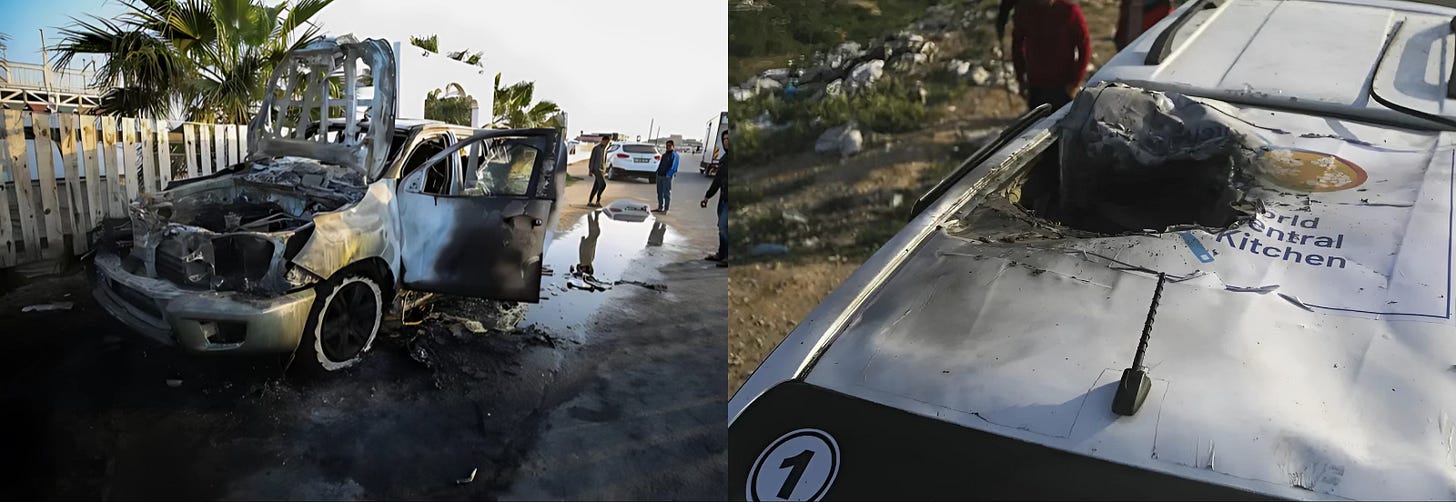
By spring 2024, Gaza’s traditional aid architecture had been hollowed out—rhetorically, financially, and physically. What replaced it was not a vacuum, but a transition: from humanitarianism to containment, from multilateralism to militarized logistics. In the ruins left behind, a new network of U.S.-backed contractors emerged, promising “secure distribution” where the UN once delivered hope.
From Oversight to Outsourcing: The Rise of a Privatized Aid Apparatus
By spring 2024, Israel’s campaign to dismantle Gaza’s traditional aid infrastructure had succeeded. UNRWA was banned. Local organizations like the Palestinian Red Crescent were sidelined or targeted. And NGOs such as Médecins Sans Frontières (MSF) and the Norwegian Refugee Council faced increasing restrictions. According to OCHA, the average number of aid trucks entering Gaza fell to just 76 per day—down from 500 before the war—leaving more than 2 million civilians on the brink of famine.
In March 2024, Israel imposed an 11-week aid blockade that further cut off food, medicine, and fuel. The IPC warned that at least 500,000 Gazans faced “catastrophic hunger.” “Families are eating grass to survive,” reported UNICEF’s James Elder from Rafah. Local aid groups described looted warehouses, ambulance strikes, and the exclusion of Palestinian actors from coordination meetings.
In this vacuum, Israel and the United States began quietly advancing a new framework. Leaked proposals outlined “secure aid corridors” and “safe zones” in southern Gaza, militarized enclaves managed by private contractors and approved by Israeli authorities. These zones were framed as solutions to alleged Hamas aid diversion, though UN investigations found those claims unverified, and Hamas denied involvement.
Critics, including MSF, warned the new approach resembled containment rather than relief. One report described the zones as “militarized aid enclosures.” A Gaza City teacher, Ahmed, told the Norwegian Refugee Council, “We’re herded into camps with armed guards, not saviors.”
Throughout late 2024, Israeli and U.S. officials began soliciting private security and logistics firms. Public contracts were not disclosed. NGOs reported being denied access to northern Gaza. MSF said 90% of its requests to deliver aid were blocked. The World Food Programme noted that over 9,000 trucks, half carrying food, remained stalled awaiting clearance. UN diplomat Tom Fletcher warned the blockade had “no military justification,” calling for immediate access. But the privatized model moved forward regardless.
By the end of the year, a new system had taken shape: Secure Distribution Sites guarded by American contractors, operated under a Swiss-registered nonprofit, and coordinated with Israeli checkpoints. Humanitarian law was replaced by contract enforcement. Oversight had vanished. What remained was an opaque, militarized aid architecture, engineered not to serve civilians, but to contain them.
The Quiet Insertion: UG Solutions and the Militarization of Aid
We first heard about UG Solutions in January 2025 when the North Carolina-based private security company became the first confirmed U.S. contractor deployed inside Gaza under the new privatized aid model. The firm was tasked with securing the Netzarim Corridor checkpoint, a strategic chokepoint dividing northern and southern Gaza. It was also charged with escorting aid convoys and guarding GHF’s Secure Distribution Sites (SDSs).
Founded in 2023 by Jameson Govoni, a retired U.S. Special Forces soldier, UG Solutions had no known humanitarian track record. Govoni’s previous ventures include a hangover supplement company called Alcohol Armor that once hosted a David Guetta concert and a counter-trafficking nonprofit. His self-description as a “degenerate from Boston” who joined the military to “inflict pain” only deepened concerns about his suitability for aid work.
UG deployed nearly 100 former U.S. military personnel to Gaza, reportedly trained by the Israeli Defense Forces (IDF). Job postings offered $1,100/day for operators and $1,250/day for medics, with $10,000 signing bonuses—drawing criticism for profiteering amid mass starvation. Despite its growing influence, no public contract has been released outlining UG’s mandate. Its website describes only vague “global solutions in high-risk environments.”
Reports suggest UG’s checkpoint operations may be supported by surveillance tools from Palantir Technologies. The company’s Lavender system, deployed in Gaza since January 2024, uses AI to flag “threats” and has been linked to military targeting. While there’s no official confirmation that UG relies on Lavender, analysts point to their operational overlap with IDF surveillance infrastructure in the Netzarim Corridor.
Delays at UG-controlled checkpoints compounded the aid crisis. By late 2024, only 76 aid trucks were entering Gaza per day, many held up for hours. “We wait under guns, not knowing if we’ll eat,” said Fatima, a displaced mother in the corridor zone.
UN Under-Secretary-General Martin Griffiths warned that “militarized aid delivery” violates humanitarian neutrality and endangers civilians. That concern appeared warranted. By April 2025, UG was overseeing 12 checkpoints and escorting over 60% of Gaza’s aid convoys. Its estimated monthly costs exceeded $1.2 million, largely funded by donors unaware that armed contractors—not NGOs—were now in charge of distributing food.
Critics argue that UG Solutions doesn’t merely fill a security gap, it anchors a new system of containment. Its role marks a broader shift from humanitarianism as relief to humanitarianism as enforcement. In Gaza, the aid worker now wears body armor and carries a weapon. And the checkpoint, not the clinic, defines survival.
The Logistics Layer: Safe Reach Solutions and the Infrastructure of Control
While UG Solutions militarized the front lines of Gaza’s privatized aid system, Safe Reach Solutions became its logistical backbone. Founded in November 2024 and registered through Two Ocean Trust—a Wyoming wealth management firm known for opaque shell companies—Safe Reach obscures its ownership and finances using a legal framework designed for secrecy. Two Ocean was the first firm cleared to custody cryptocurrency under Wyoming’s deregulatory laws and serves ultra-wealthy clients seeking asset protection. Why a supposed humanitarian contractor would embed itself in such a structure raised immediate red flags.
The firm’s founder, Philip F. Reilly—better known under the alias Philip Raleigh—previously led the CIA’s Special Activities Center, the agency’s covert paramilitary division. In January 2025, former U.S. Department of Defense official Joe L’Etoile joined Safe Reach’s executive team, further reinforcing concerns that the company was less a humanitarian actor and more an intelligence-linked contractor.
Safe Reach assumed control of GHF logistics, coordinating aid convoys, transport routes, and the day-to-day operations of SDSs. By May 2025, the company reportedly managed eight fortified SDSs and coordinated up to 70% of all Gaza-bound convoys. Unlike UNRWA’s open-access warehouses, SDSs require IDF clearance and armed escort. “We queue for hours at these sites, surrounded by guns, just for a bag of flour,” said Mahmoud, a displaced father in Deir al-Balah.
Critics argue Safe Reach’s operations prioritize security over speed. Only 76 trucks were entering Gaza daily by late 2024, far below the 500-truck daily pre-war average. Médecins Sans Frontières reported that 90% of its requests to deliver aid to northern Gaza were denied, leaving hospitals without supplies.
By May, Safe Reach was managing roughly 1,200 monthly convoy trips and had embedded itself, alongside UG Solutions, at the core of GHF’s privatized aid regime. Its shell-company structure shields it from transparency, a tactic UN OCHA flagged as “deliberately opaque.” Social media commentators dubbed Safe Reach a “CIA front,” citing its financial secrecy, intelligence pedigree, and lack of public oversight.
With over 500,000 Gazans facing famine, Safe Reach’s model reflects a broader trend: the transformation of humanitarian logistics into a securitized and outsourced system. Rather than restoring Gaza’s civilian lifeline, it appears designed to manage and contain it.
Gaza Humanitarian Foundation: The Facade of Neutrality
Founded in February 2025 and registered in Geneva, the Gaza Humanitarian Foundation (GHF) emerged as the civilian-facing centerpiece of the privatized aid regime. Led by Nate Mook, former CEO of World Central Kitchen, and Jake Wood, founder of Team Rubicon, GHF promotes itself as a nonpartisan solution to Gaza’s humanitarian collapse. But its operations suggest something else: a managed infrastructure for population containment, coordinated with the Israeli military and enforced by American contractors.
GHF’s model centers on SDSs, fortified aid zones designed to serve up to 300,000 civilians each, with the initial phase targeting 1.2 million Gazans. According to internal strategy documents, the sites are audited in real time, guarded by ex-military contractors from UG Solutions, and operated in logistical partnership with Safe Reach Solutions. No Palestinian civil society groups are involved. All aid access is routed through Israeli-approved corridors, and critics argue the design intentionally funnels displaced people into militarized zones to enable broader demographic engineering.
Despite branding itself as independent, GHF’s leadership has no formal humanitarian background. While both Mook and Wood have experience in crisis logistics, neither have worked under international humanitarian law frameworks. GHF has not disclosed its funding sources, and public records reveal little about its financial governance. Its banking infrastructure includes JP Morgan, Truist, and a Swiss affiliate linked to Goldman Sachs, raising further questions about transparency and financial intent.
The foundation also faces questions about its strategic coordination. According to Reuters and AP sources, GHF briefings were shared with U.S. and Israeli authorities, and the SDS network was developed in direct consultation with the IDF. Although GHF claims to serve “those most in need,” aid workers say the system functions more as a screening and control mechanism than a relief network.
One point of particular controversy is GHF’s connection to World Central Kitchen—the organization Nate Mook once led, and whose convoy was bombed by Israel in April 2024, killing seven international aid workers. Less than a year later, Mook was announced as GHF’s director. Why did Mook join an Israeli-coordinated aid effort so soon after the attack on his former team? Was this a shift from independent humanitarian work to aligned crisis management?
UNICEF spokesperson James Elder called the SDS model a choice “between displacement and death.” Others have been blunter: “GHF is not an NGO—it’s a firewall,” one aid official told Al Jazeera. “It exists to replace oversight, not to save lives.”
By mid-2025, GHF had taken full operational control of aid coordination in Gaza—without public mandate, without local partnership, and without international accountability.
Operation Gideon’s Chariots: The Blueprint for Ethnic Reengineering
Launched on May 15, 2025, Operation Gideon’s Chariots is the largest Israeli assault on Gaza since the war began, coordinated by land, air, and sea. Though publicly framed as an operation to defeat Hamas and rescue hostages, its structure reveals a broader strategy: reoccupy strategic territory, depopulate the north, and replace international humanitarian institutions with Israeli-run infrastructure. The operation marks a shift from containment to conquest.
According to OCHA, over 70% of northern Gaza’s infrastructure—including homes, schools, and hospitals—has been destroyed. More than 1.9 million people have been displaced, with 500,000 facing catastrophic hunger as Israel maintains a cap of just 76 aid trucks per day, compared to 500 before the war. Entire neighborhoods, including large portions of Jabalia, Beit Lahia, and Shuja’iyya, have been leveled beyond recovery.
The operation is unfolding alongside forced evacuations and mass civilian targeting. Tent encampments in Khan Younis have been bombed. Hospitals, including the Indonesian, European Gaza, and Al-Awda facilities, have been besieged or rendered inoperable. In a single week, Israel struck over 670 targets, killing more than 370 Palestinians, including entire families and multiple journalists.
But the military campaign is only one dimension. Operation Gideon’s Chariots is being implemented alongside plans to forcibly relocate Gaza’s population southward, with Israeli leadership openly discussing the long-term uninhabitability of the north. In leaked remarks to Israel’s Knesset Foreign Affairs and Defense Committee, Prime Minister Netanyahu reportedly stated:
“We are destroying more and more homes. They have nowhere to return to. The only inevitable outcome will be the desire of Gazans to emigrate outside of the Gaza Strip.”
Such statements are not rhetorical excess. They reflect the operational logic of the campaign: make northern Gaza unlivable, corral survivors into tightly controlled zones in the south, and create conditions that pressure Gazans to leave entirely. The long-term goal, as stated in IDF briefings, includes: seizing strategic areas, defeating Hamas, securing the release of 59 hostages, and replacing international aid systems with IDF-controlled distribution hubs.
The operation’s name itself is telling. Operation Gideon in 1948 was a major Nakba campaign aimed at clearing Palestinians from the Galilee. Today’s “Gideon’s Chariots” mirrors that legacy, combining religious symbolism with state violence to achieve demographic restructuring. The destruction of Gaza’s civic infrastructure, combined with a total blockade on aid and relocation pressure, reflects a blueprint not just for control, but for erasure.
Today, Israeli forces are not simply engaging Hamas. They are redrawing Gaza’s geography, fragmenting its population, and laying the groundwork for a permanent buffer zone in the north. The IDF has explicitly stated its intent to retain captured territory, replacing international oversight with military-administered aid zones. The civilian population is being pushed farther south, closer to the Egyptian border, and, in some leaked discussions, possibly beyond it.
Journalists and NGOs argue that Gideon’s Chariots is not a counter-terrorism campaign, it is a blueprint for permanent demographic restructuring. With the north rendered uninhabitable and return blocked by IDF-designated no-go zones, Israel achieves a de facto annexation: no formal claim, no permanent military presence, just a cordoned population, managed through privatized checkpoints and AI-vetted aid lines.
The operation also gives Washington cover. With no U.S. troops deployed, the Trump administration maintains its “no new wars” narrative while still enabling Israeli control through logistics, contractors, and surveillance infrastructure. The model recalls post-invasion Iraq: dismantle oversight, empower private firms, and rebuild under the banner of stabilization. In Gaza, humanitarian crisis has become a service contract. Relief is militarized. And occupation is no longer declared—it’s administered.
Crisis Engineered, Control Exported
Gaza is not merely a site of humanitarian collapse—it is a prototype for a new mode of occupation. What began with the dismantling of UN oversight has evolved into a system where displacement is logistical, surveillance is humanitarian, and military objectives are masked as aid. This is not peacekeeping. It is control by contract.
Through a web of private firms—UG Solutions, Safe Reach, and the Gaza Humanitarian Foundation—Israel and the U.S. have constructed a layered infrastructure of containment. With Palantir’s AI lurking in the background and international NGOs sidelined, Gaza has become a live experiment in techno-militarized relief. The operation is streamlined, data-driven, and politically insulated.
But Gaza is not the endpoint. The same frameworks now being tested, privatized checkpoints, vetted aid zones, shell-company logistics, can be replicated in Syria, Yemen, or Ukraine. As global powers seek to minimize direct military entanglement, the Gaza model offers a new template: occupation without declaration, war without soldiers, and suffering without accountability.
Unless this system is challenged, legally, politically, and financially, it will metastasize. Today it is Gaza. Tomorrow, it could be anywhere.




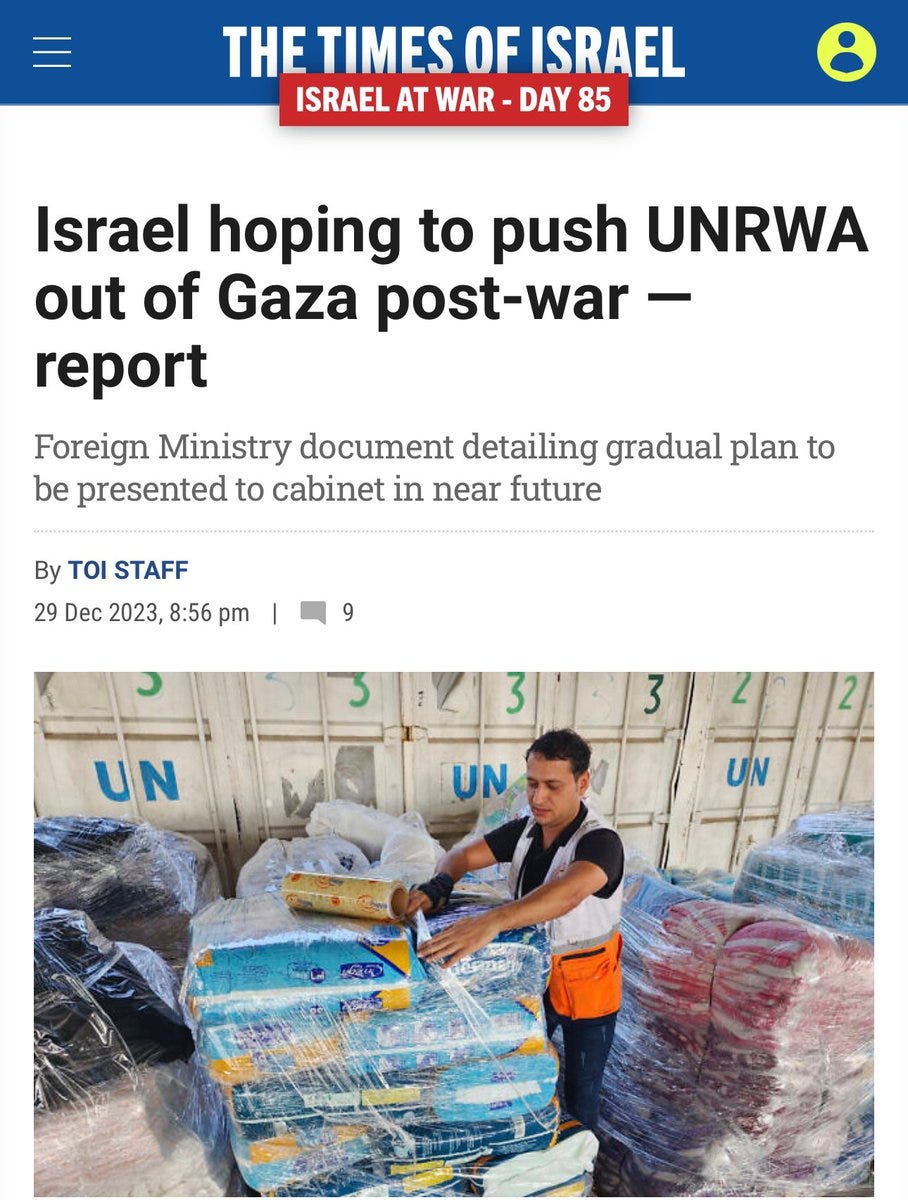
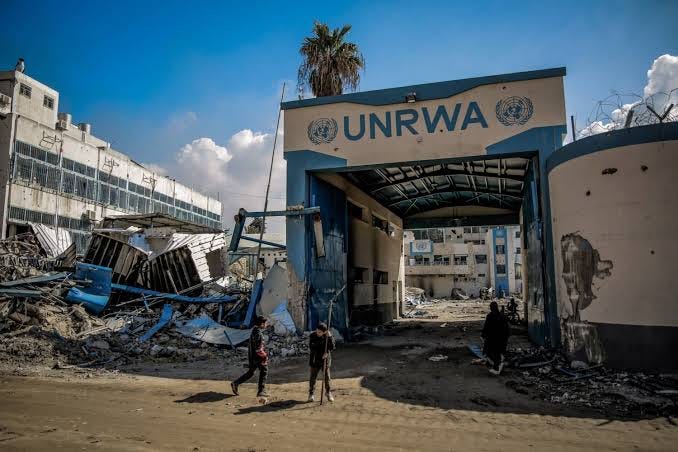
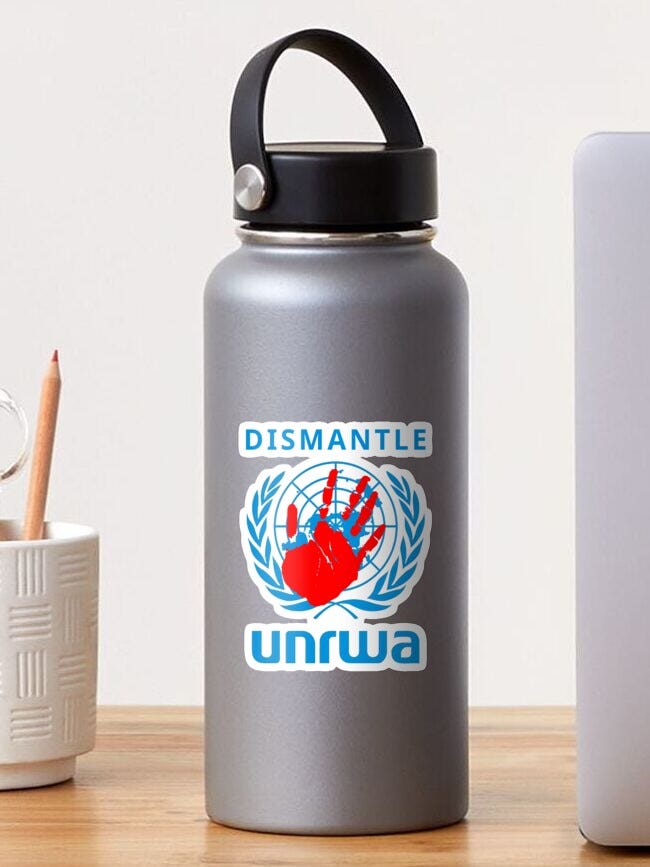
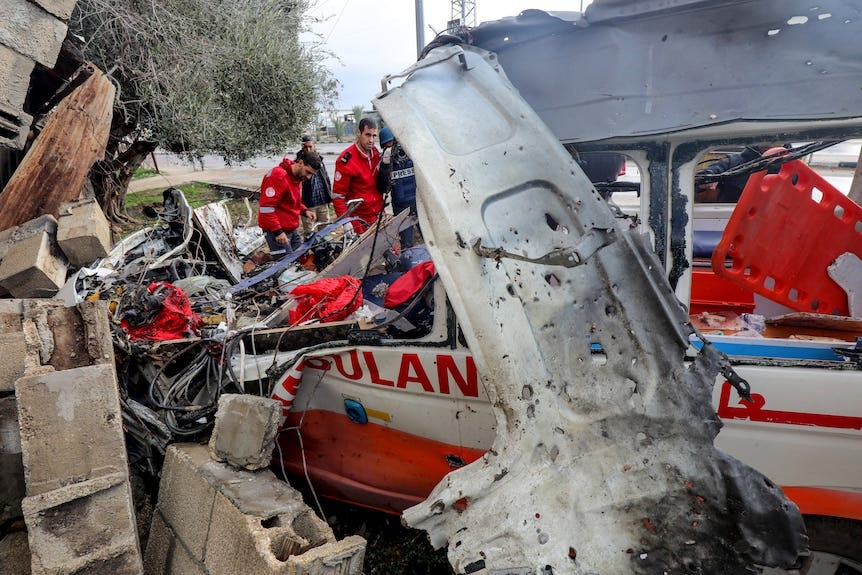

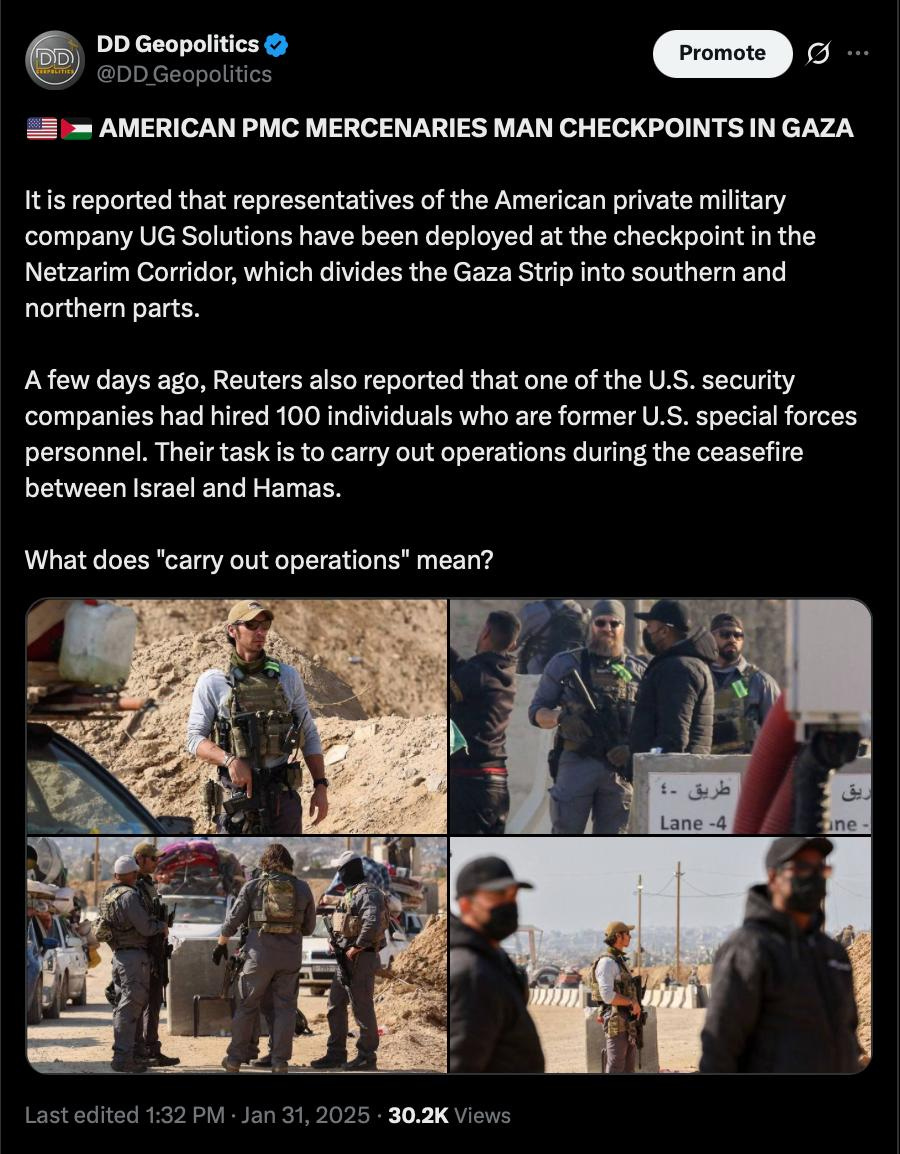
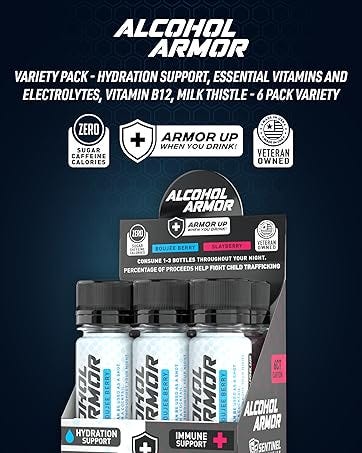
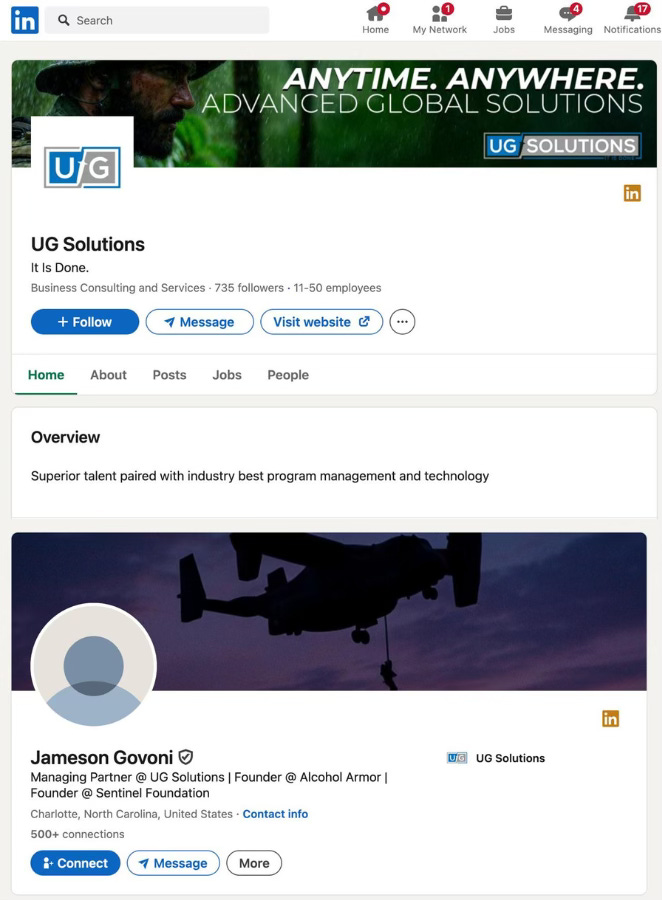
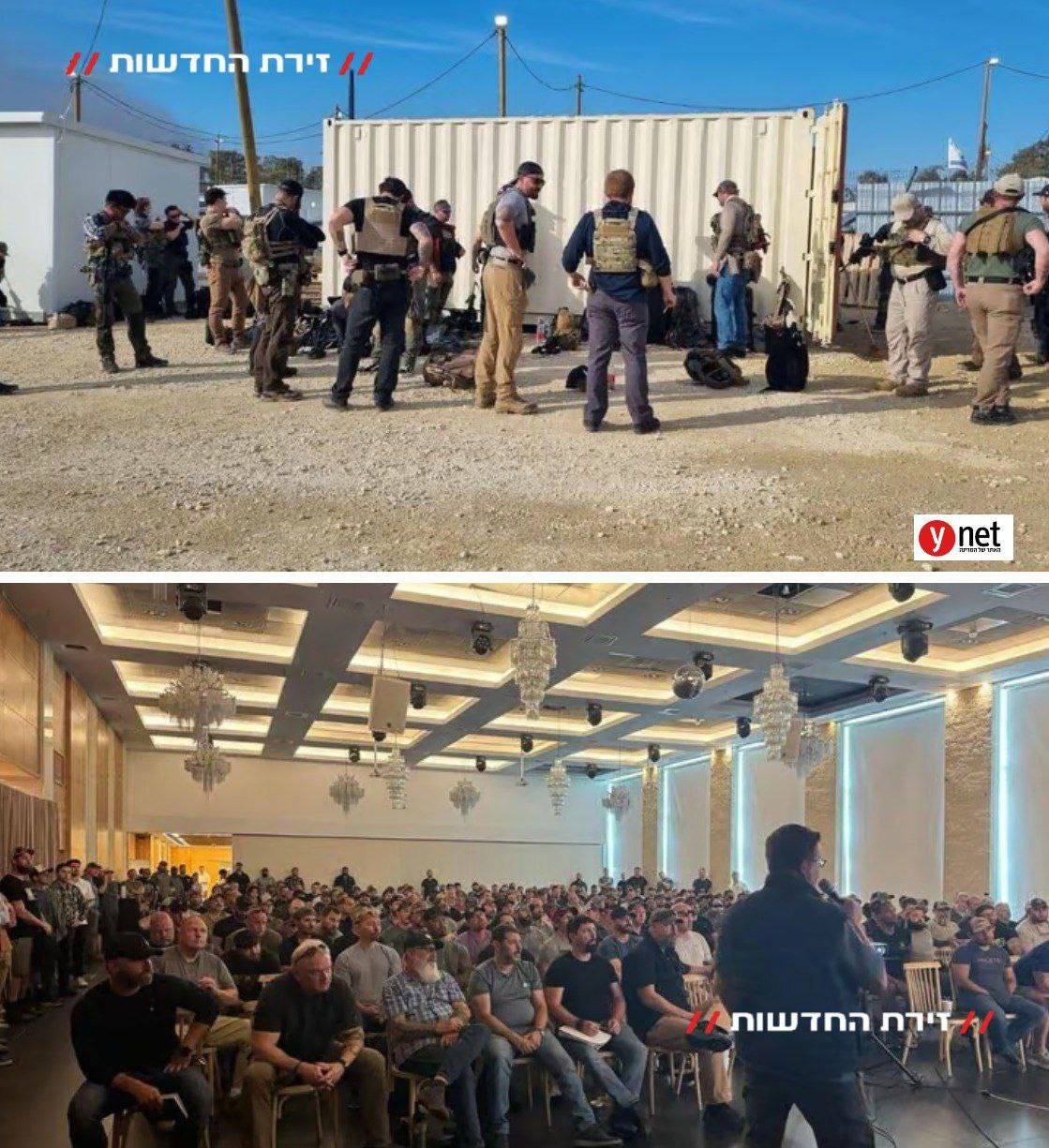
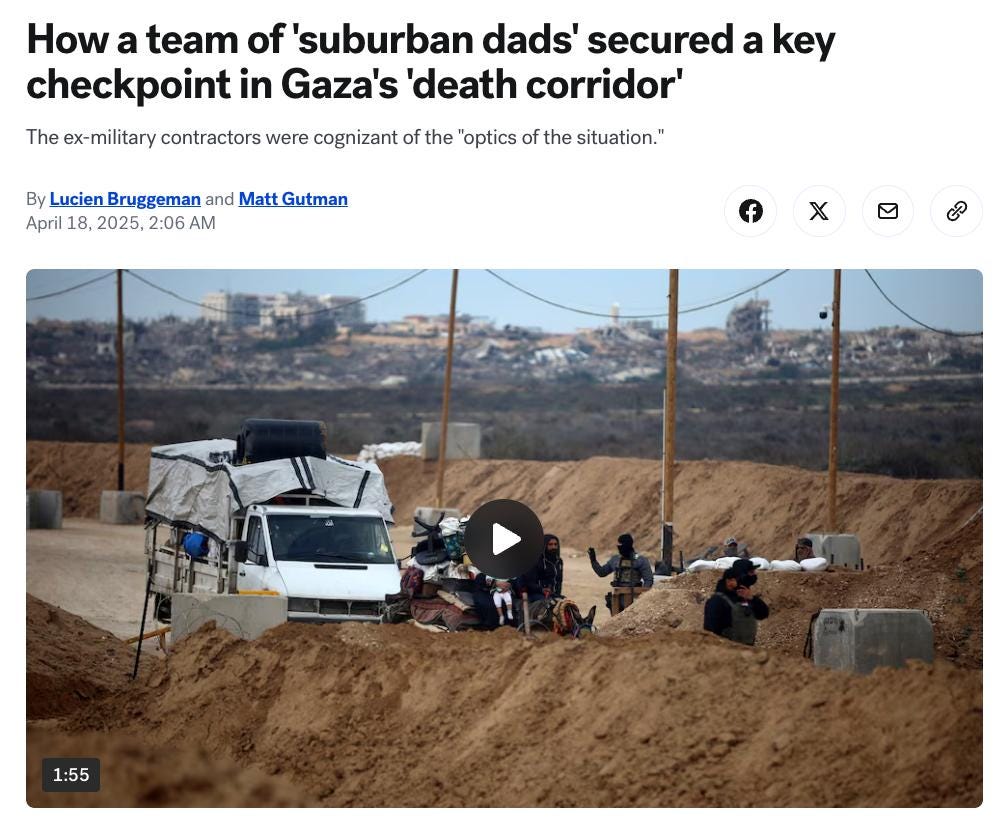
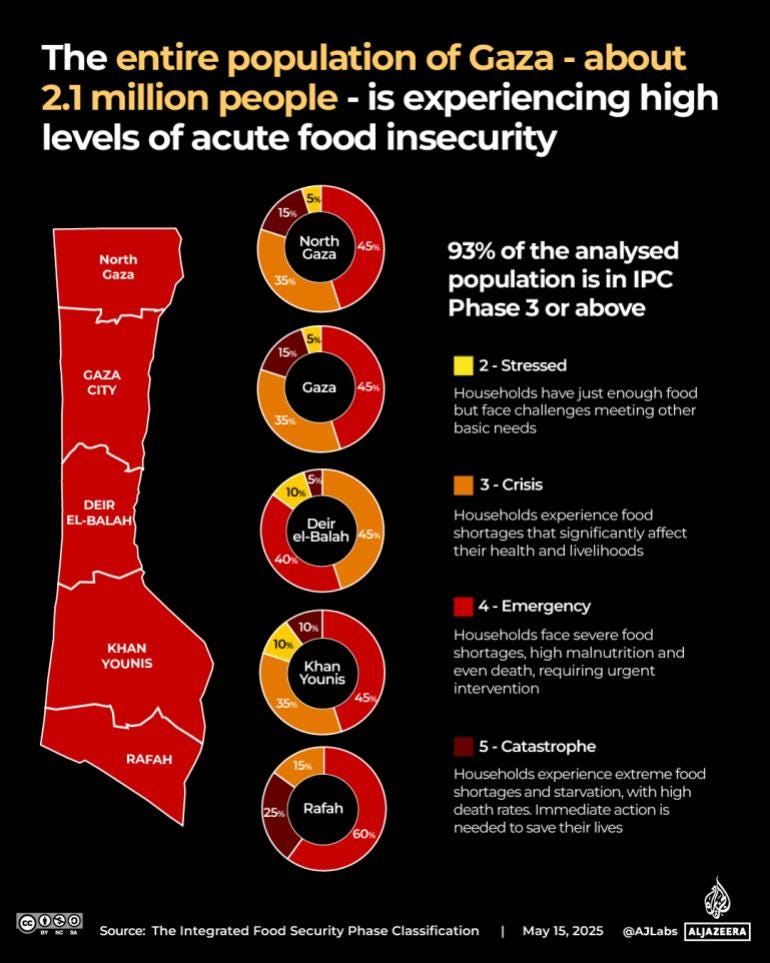
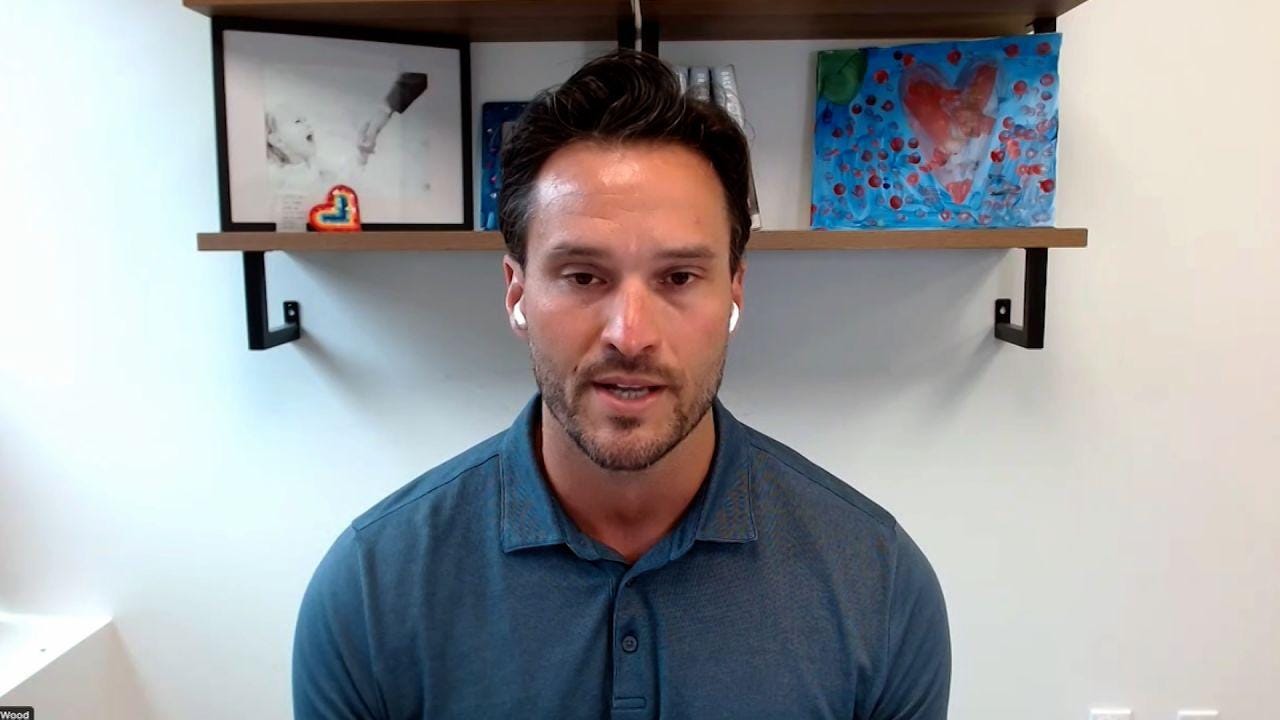

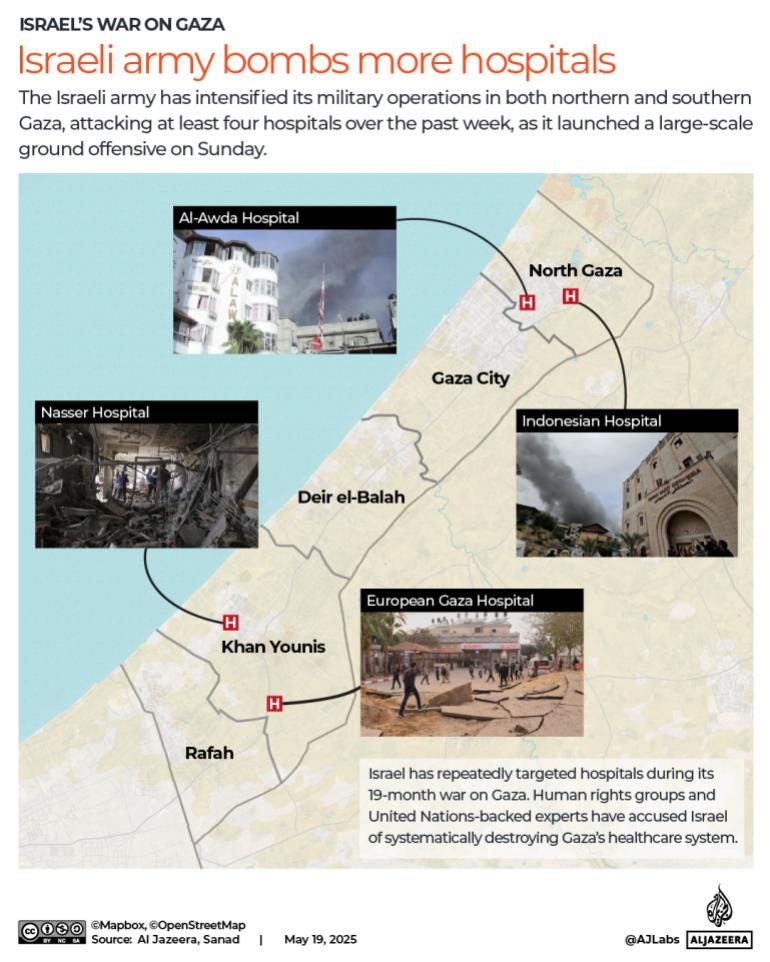
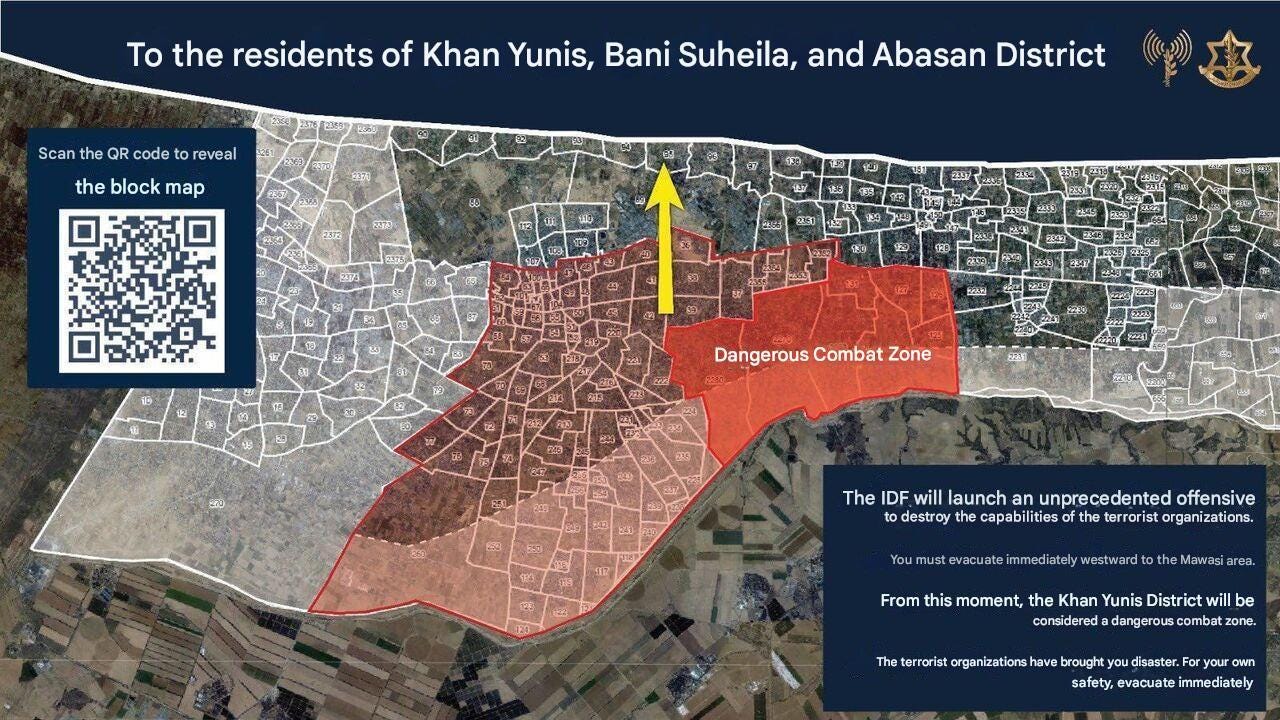
Thank you for your well written article. I find the content chilling. Why has my mind gone to dystopian '70's novels and fear for my grandkids?